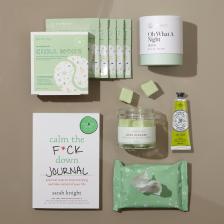
I recently received an email from a woman named Joan, who shared with me her difficulties in communicating due to a hearing disability. She especially has trouble in crowded rooms. In Joan’s experience, people become uncomfortable when she tells them she is hard of hearing and asks them to repeat themselves. She doesn’t want to make people uncomfortable, and so she turned to me for help.
My view is this: Some things make people uncomfortable, but you need to say them anyway.
After my late husband died, it was very awkward to tell stories of my life, because they all included John. And eventually my conversation partner would want to know who John is. The conversation would eventually lead into the question, "Oh, is that your husband?"
After I shared something so personal, the other person often reciprocated by sharing something personal, too.
I tried so many different ways to politely explain: “He's my late husband; I'm a widow; he was my husband; Oh, he was my husband, but he passed …” etc. No matter how it was phrased, the conversation came to a dead stop. I had to make the other person feel comfortable by saying, "Please, it's OK.... of course, I'm sad that he is gone, but I would not trade my time with him for anything. He made me very happy." The point is I knew they would be uncomfortable, and I did my best to make them feel at ease.
But here's the thing—after I shared something so personal, the other person often reciprocated by sharing something personal, too.
Though clearly it's not the same situation, if you tell someone you have a disability—no matter what it is—you are going to make the other person uncomfortable. However, I think the way you ease the discomfort is by being explicit about how you want the person to react or treat the situation. By just saying, “I’m hard of hearing,” you could be, in a sense, saying, “It will be too difficult to communicate with me.” So they back off. Some people might actually want to get past that point with you, but might be afraid to offend you by asking more questions. So they, too, back off.
Just as I had to do regarding talking about John, you will have to do the same. You present the situation, then set them at ease by telling them how you would like to communicate.
For instance, you can say, “I have some hearing loss, but I’d love to chat with you. I can understand you very well if you _______.”
Now your conversation partners don’t have to ask, and know exactly what to do. Give them clear instructions, like:
- “I can understand you very well if you...
Keep reading on Quick and Dirty Tips







































